The Arab States ITU region covers the nations of the Arab League, spanning parts of North Africa and the Middle East. This region includes countries such as Egypt, Saudi Arabia, the UAE, and Qatar. Historically rich and strategically positioned, the Arab States have been at the crossroads of global trade and civilisation for millennia. Today, they are characterised by their rapid modernisation, significant oil and gas resources, and a blend of tradition and innovation. In telecommunications, several of these states are at the forefront of digital transformation, with robust 5G networks and high internet penetration rates.

4G Coverage & Internet Use (% of Population)
Top Ten 4G Bands
Countries
The are 15 countries in this region.

United Arab Emirates (UAE) is located in the Middle East, with a diverse geography that includes sandy desert, coastal plains and rugged mountains. Its population of over 9.6 million is largely concentrated in urban areas such as Dubai and Abu Dhabi, but there are also remote regions like the vast Rub' al Khali desert. The UAE has a robust telecommunications sector; it is known for its high-speed ...

Yemen, a country located in the southwest corner of the Arabian Peninsula, has a diverse and rugged topography consisting of mountain ranges, plateaus and desert plains. It has a population of approximately 33 million, with a high concentration of its populace in the western regions and a relatively low density in the eastern desert areas. The country includes the island of Socotra, a remote ...
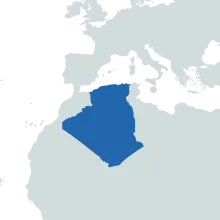
Algeria's telecommunications landscape presents unique challenges due to the country's extensive geographical diversity and uneven population distribution. The vast Sahara Desert, which covers some 90% of the nation, alongside its rugged Atlas mountain ranges, pose significant difficulties to infrastructure development. Nonetheless, Algeria has been proactive in overcoming these obstacles ...

In Bahrain, the technology and telecommunications landscape is shaped by its unique geographic and demographic characteristics. Being relatively small with its population largely concentrated in urban areas, particularly Manama and Muharraq, has enabled focused and efficient infrastructure development. The government, through its 'Cloud First' policy, leverages innovative solutions like cloud ...
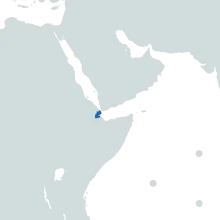
Djibouti, located in the Horn of Africa, is characterised by its arid climate and sparse population distribution. Most of its 1.1 million population, over 600,000 people, is concentrated in the capital city of Djibouti. The nation faces unique infrastructure challenges due to its geographical makeup with a lack of renewable energy resources and a largely underdeveloped telecommunications sector ...

Located in the heart of the Middle East, Jordan's geographical position and compact size, covering approximately 90,000 square kilometres, significantly influence its technological and telecommunications landscape. The majority of the population, which totals about 11 million, is concentrated in the north-west of the country, in and around the capital, Amman. Despite its arid and desert-like ...

Kuwait, a small, oil-rich country located in the Middle East, has a total land area of 17,818 square kilometres, making it one of the smallest countries in the world. The population of approximately 4.3 million is largely concentrated in urban areas, with the capital, Kuwait City, being the major population centre. The country is relatively flat, with its most prominent point, Mutla Ridge ...

Lebanon, a Middle Eastern country on the Mediterranean Sea, is characterised by rugged terrains and a complex geography with mountains and valleys that present challenges for technology and telecommunications infrastructure. The country's population of almost 6 million is concentrated mainly on the coastal urban areas, such as Beirut, which is the primary hub of telecommunications and IT services ...
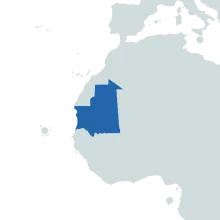
Mauritania, located in North West Africa, is predominantly desert terrain, with a population of roughly 4.7 million distributed mainly along the Senegal River and the Atlantic coast. This geographic and demographic layout presents unique challenges for the provision of telecommunications and energy infrastructure. The country's telecommunications sector is still in a developing phase with limited ...

Morocco, situated in North Africa and encompassing diverse terrains from the Atlantic and Mediterranean coastlines to the rugged mountains and Sahara desert, provides a unique landscape for technological and telecommunications development. The population of approximately 37 million is unevenly distributed, with a heavier concentration in urban areas like Casablanca and Rabat, and less densely ...

Oman, located on the southeastern coast of the Arabian Peninsula, has a diverse geography that ranges from rugged mountains and desert terrain to coastal plains. This vast topography influences the distribution of the country's 4.5 million residents, with a majority inhabiting urban areas like the capital, Muscat, and a smaller number residing in remote regions. In terms of telecommunications ...
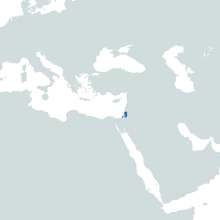
The Palestinian Territories, comprising the West Bank and the Gaza Strip, present very distinct challenges for technologies and telecommunications. The region’s topography is diverse, with coastal plains, highlands, and desert areas, influencing the distribution of its population of roughly five million. Population centres are unevenly dispersed, with high concentrations in areas like Gaza City ...

Qatar, a small peninsula located in the Persian Gulf, hosts a population largely concentrated in its capital, Doha, resulting in a dense urbanised region with vast uninhabited desert areas. The country's noteworthy infrastructure projects include Hamad Port, one of the largest ports in the Middle East, and the integrated rail network, Qatar Rail, which encompasses the Doha Metro and the long ...
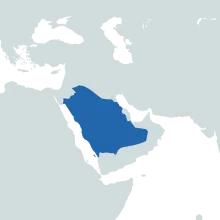
Saudi Arabia, situated in the Arabian Peninsula, is predominantly arid, with diverse terrain ranging from mountains to desert. The population of 36 million is concentrated in urban centres such as Riyadh and Jeddah, with vast, sparsely populated desert areas in between. This uneven population distribution presents challenges for infrastructure provision. Despite these challenges, Saudi Arabia is a ...
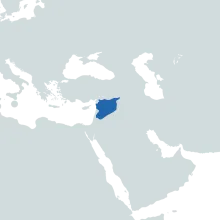
Syria, situated in the Western Asia region, is characterised by diverse geographical features including the Mediterranean coast, mountain ranges, and wide deserts, which can pose challenges to the development and maintenance of a comprehensive telecommunications and technology infrastructure. The population is unevenly distributed, with high concentrations in urban areas such as Damascus and ...